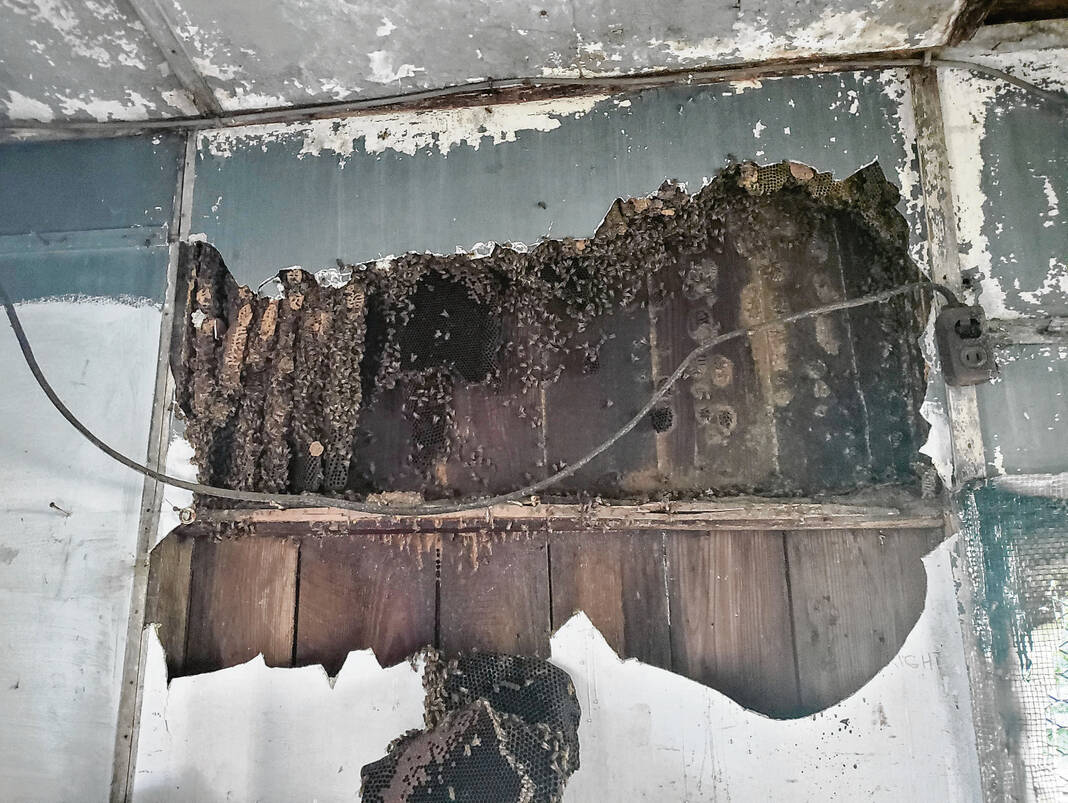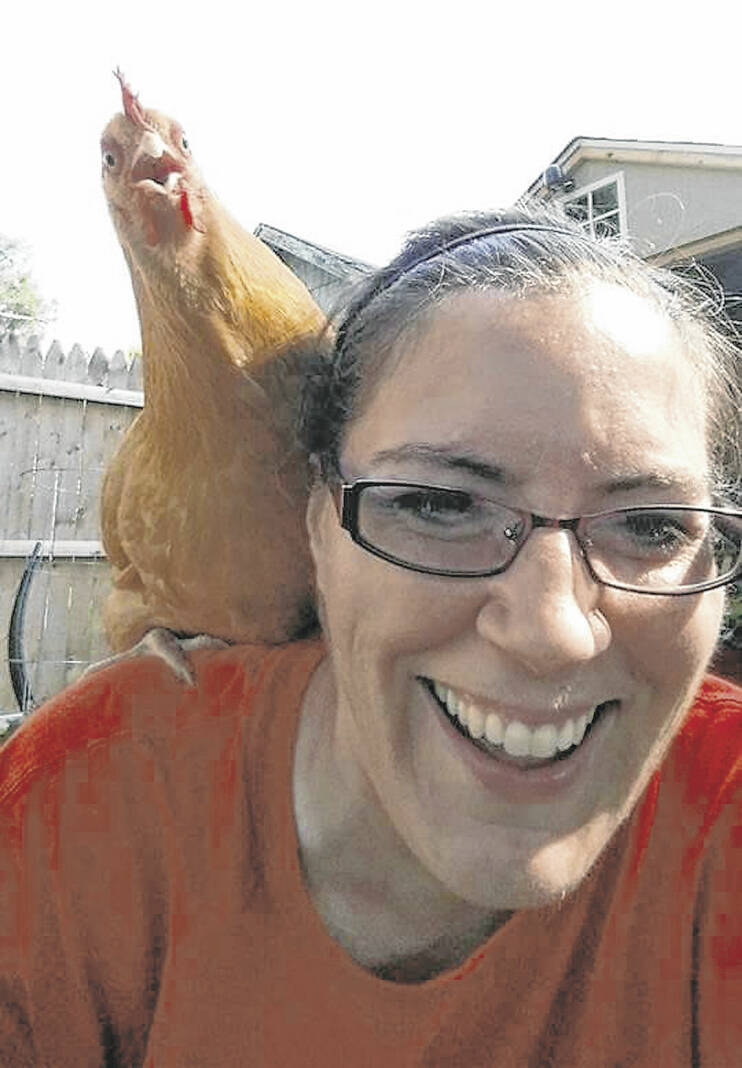
A beehive that recently was cut out of a shed by Stephanie Strothmann is shown.
Photo by Stephanie Strothmann

Stephanie Strothmann
A well-experienced beekeeper knows the end of the summer is not the time to be catching swarms or cutting out hives from buildings, trees, etc.
At this point in the year, the resources available to newly captured groups of bees is minimal, and the chances of them surviving are next to none.
Being that I am not well experienced nor one to not try something that is seemingly impossible, I didn’t heed that lesson a week or so ago when I agreed to tackle a beehive that was located in an old shed that was due to be demolished soon.
There’s an observation I’ve noticed over the past few years of capturing bees. People love to watch. I often wonder if they have a sense of morbid curiosity wondering if the bees are suddenly going to go awol and attack the person in the big white suit.
Most of the time, it takes a simple shake into a bucket to remove a group of bees that have gathered, or use a cardboard box, and gently scoop them up to place into a beehive box.
This hive removal I was going to tackle was going to be one I wouldn’t soon forget.
I was able to gain access to the inside of the shed and started to pry a section of the wall where I thought they might be hiding behind.
The walls weren’t the usual drywall but rather thick sheetrock that was set to stand the test of time. It was soon evident I would need to take a hammer to it and sunk my first hit about halfway up the 8-foot wall.
One or two little bees came curiously out of the hole, so I thought, “Well, maybe I’ll hit just a bit higher.”
I can honestly say I’ve never been so happy for a full coverage bee suit as suddenly, thousands of angry worker bees came pouring out of the second hole that the hammer had made.
Not to be daunted, I hit the wall again and again further up until I reached the point where the wall met the ceiling. Thankfully, the hive went no further than the section of wall, which was approximately 3-by-2-feet wide.
Bees were angrily swarming about me at this point as I went to start removing the sections of comb. Honey was pouring from it, coating my beekeeping gloves, the hammer, into the wall, just about everywhere. The deafening sound of honey bees and the intoxicating smell of warm honey created an almost surreal experience.
I placed the comb and the bees into several 5-gallon buckets outside when on a trip back into the shed to gather more, I heard, “Hey there. I’m glad you’re back to get the bees.”
It was a neighbor who lived about 50 feet or so from the shed. I nodded and told her to get back into her home, that the bees would be very defensive from my work. She continued to hang out at the fence line until I suddenly saw her start swatting away at bees and finally retreated back into the safety of her house.
Honey bees, for the most part, are fairly docile until they are riled up, and once they get riled up, they’ll stop at nothing to be sure that whatever the threat was to them has been chased far away. Typically, I can work in a hive and then step about 25 to 30 feet away with no concern for being stung. Not this time. When I went to unzip my veil to take a break, two of the bees instantly gravitated toward my face with one of them zinging me right on the underside of my nose.
To me, honeybee stings don’t feel like the fiery burn of a wasp or hornet but rather an irritating pin prick that swells over time.
It took two days total for me to finally decide I had gathered as many as I could and it was time to stop. Bless that neighbor’s heart. She came out again the second time I was there and once again got chased back inside. It’s always best to watch a beekeeper do his or her work from behind closed doors and windows.
I ended up with four stings total, which I don’t think is too bad considering the size of the hive with which I was dealing. Word is still out on whether the amount of bees I caught will make it, but I’ve given them every chance I can. One thing for certain, this will be one capture that will be talked about for a very long time.
Until next time…
Stephanie Strothmann owns Purple Shamrock Farm LLC in rural Seymour. Send comments to [email protected].
